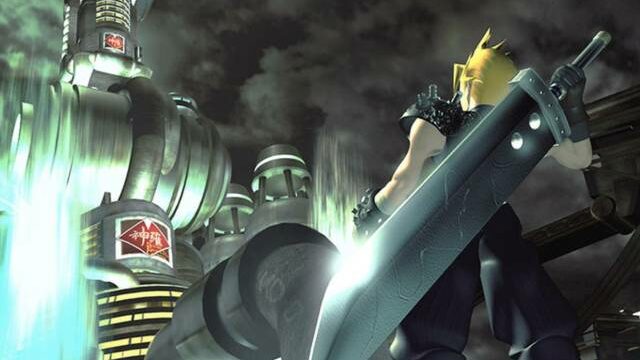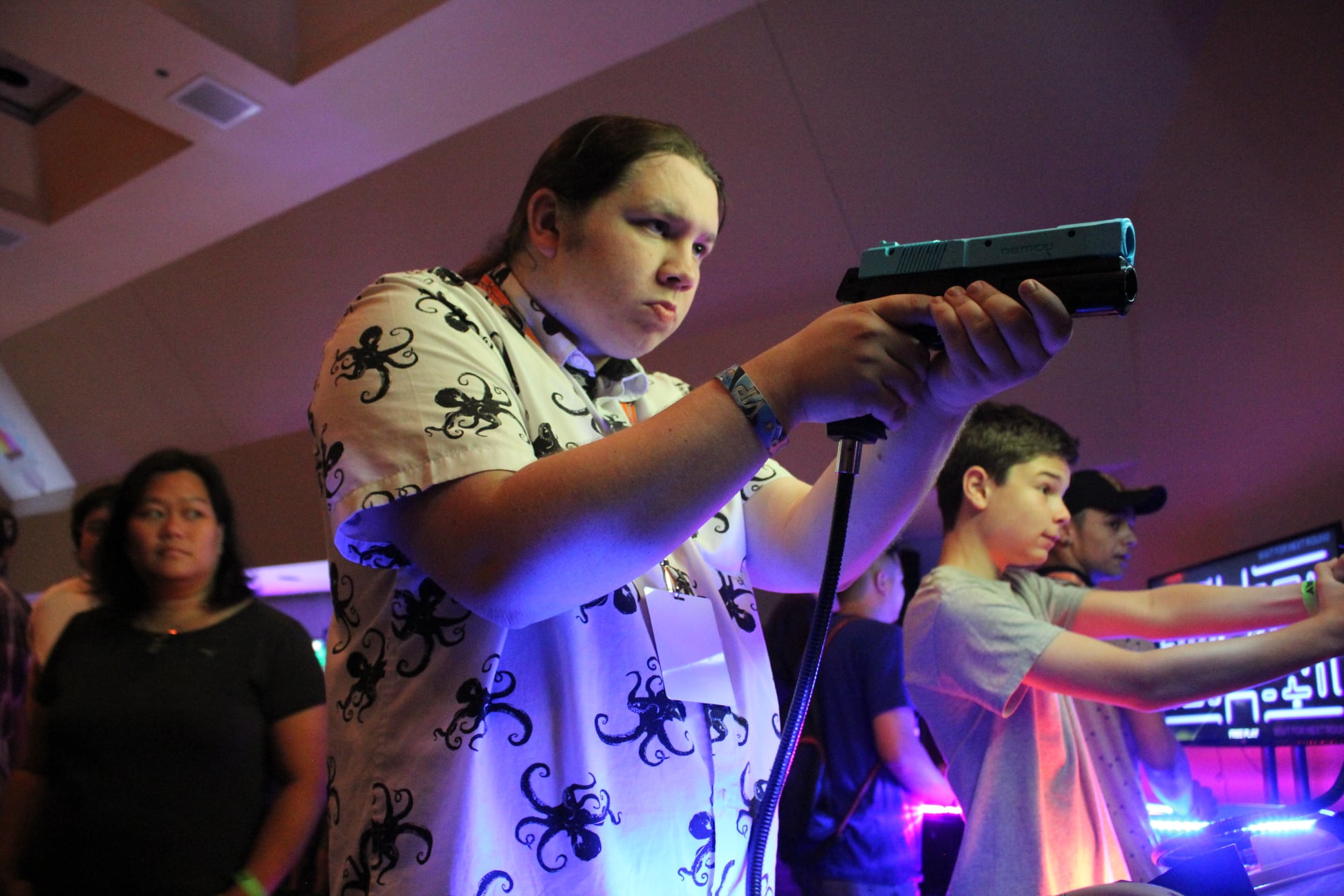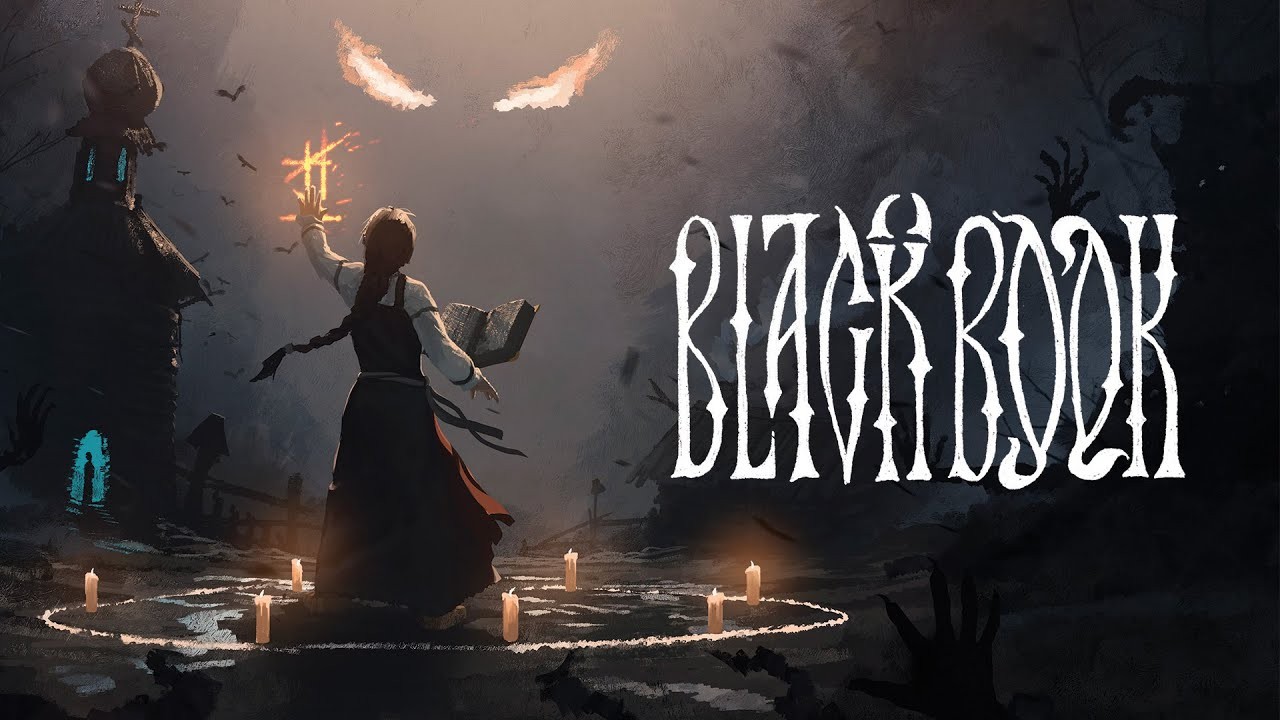Share
When we talk about video games, there’s a particular water hazard we as consumers let ourselves wade into. We ask, what are the specs? How sharp are the graphics? What’s the FPS? How’s the rendering?
We treat no other piece of media with this kind of techno-centric intensity. We instead ask of narrative rhythms, or artist intention, or poetic cadence. Was it beautiful to look at, with lush lights and scenery exquisitely framed like picture windows? Did it make us feel something ethereal or delicately numinous – an emotion that, perhaps, we aren’t quite ready to call by name? We speak of chemistry like it’s a neon blue spark struck from kinetic machinery or context like a baby bird cradled in our craggy hands, but we never ask for the details of the technology that conjured the finished thing before us. All other art exists in the abstract, as pretty and untouchable as smoke. Video games though, trundle through the English language as tools or equipment. Dispassionate, precise, strict as stereo instructions.
Framing games in this way boils out the nuance, leaving a bland, milky slop of pure id. We speak of their more delicate qualities – genre, structure, form, flow – only in terse sloganeering that lands like punches: roguelike! Soulslike! RTS! RTT! MOBA! Games can be state of the art, high poly, fast paced, polished. They are not often referred to as melodramas, neorealist, or autobiographical. Whether we’re willing to address it or not, our critical language around games is decidedly anatomical, leaving little room for serious discussion without defaulting to linguistic tropes that ask about the how rather than the why.
Under different circumstances, it isn’t impossible to march through critical discussions within these frustrating constraints. We can name games, place them, conjure them in our minds by their “Triple A graphics” or “top down” play style. With Oleander Garden’s PAGAN trilogy, though, asking about the experience of playing it misses the point entirely. In PAGAN, in fact, you may technically not be the player at all.
Dawn in the devil city
PAGAN is three tangentially related games spun around a gleeful distaste for genre conventions. Chronologically, PAGAN: Technopolis was released first, described in pithy poetry as “a game about a city at dawn where nothing has quite made sense for at least six hours, or maybe six-thousand years.” In it, you gather VHS tapes containing scattered breadcrumbs of human history with the goal of feeding them into a television that a monolithic Venus statue watches with stoic apathy. There are three endings, each abrupt text blocks of academic musings that, in context, seem to critique our misguided and often one-sided relationship with video games.

PAGAN: Emporium follows, beginning with the blue screen of a loading VHS tape and finds the collapsed, half buried form of the Venus from Technopolis decaying before you. The city is gone, and a wasteland is all that remains, populated with charred knights patrolling bonfires and buildings that look like single family homes but collapse into early PC dungeons once inside. Emporium has sharper teeth, aesthetically and metatextually. Garden describes it as the “twilight game” to Technopolis’s dawn with the endgame asking you to “make friends with the devil”. Even the developer description, riddled with caps lock and expletives, reads with the biting frenzy of an explorer gone mad.

Describing either of the earlier two titles to new players takes mental fortitude and a grit-your-teeth willingness to succumb to the weakness of how we talk about games. They’re walking simulators, art games, and in the loosest sense of the word horror titles. They’re dark, ominous, and cryptic. There is no protagonist, only you as the player present and self aware, and they only vaguely have plot and characters. Both of them feel like discovering someone else’s home movies in a thrift store but missing the Rosetta stone of genealogy to put it all together.
It’s all too easy to placidly puzzle through them, drumming your fingers and turning them over in benign daydreams, or to write them off entirely as art for art’s sake. The third game, though, is decidedly less cryptic about what lies in the center of the PAGAN puzzle box: something that looks remarkably like a diary.
Bits and bytes long forgotten
PAGAN: Autogeny is less discursive than its forebears. It is, neatly, “an experimental first person open world role playing game set in the digital ruins of a largely abandoned MMORPG.” That MMO is “Plaza 96”, a fictional server that, in the first moments of the game, gleefully announces itself as the “home of user hostile design” against the inoffensive teal background of factory reset public computer.

Entering the map feels like the waiting room for a game of laser tag: an empty food court, a gift shop, a gender neutral restroom. Through the grain and haze it’s not impossible to imagine players unloading their inventory, changing gear and regrouping with friends at resin-sticky tables, armed with legendary weapons and discounted soft drinks. It’s a literal game lobby, played up with droll wit, and even empty it can be viewed with the same kind of cognitive dissonance required in watching a gaggle of cosplayers break for lunch at an Arby’s. It is all a fiction, a player playing a player playing a game. Right from the beginning there is no immersion to break.
“Plaza 96” is an almost, but not completely, dead server. NPCs abstracted into softly sloping polygons bum around the map, speaking in either the pidgin of a fantasy LARP or exuberant chatspeak, and the map winds off into pseudo-Egyptian deserts, swampy taverns, labyrinthine caves. In Autogeny you’re given a character to inhabit for the first time, a non-speaking “protagonist” named Vivian, and on its surface the game is asking her to traverse these long abandoned digital ruins to collect body parts and forge a golem – a smiling human avatar within this abstracted techno space.

It is remarkably easy to treat Autogeny as just a cryptic, slightly odd alt game, perhaps one that contains some obtuse riddle to puzzle through and solve to unlock a triumphant secret ending (which it does have.) Yet the inclusion of this conquerable secret feels like a deflection from the deeper core of the game: despite riddles, complex symbolism, and twice removed abstraction, it’s impossible to get away from the thrumming feeling running underneath all of Autogeny that parts of it are true.
YOU OWN THIS NIGHTMARE REALM
Playing Autogeny gives the same tender yet uncomfortable feeling as reading someone else’s diary. Vivian roams dungeons and slays bosses to assemble a lithe female body, ten heads tall and mannequin sleek. You are alchemizing a new being in this game within a game – an act that nestles neatly into the codex of a fantasy title – but your leveling skills read with a modern cheekiness that underscore that Vivian is not simply a character you’re playing, but a player herself. Do you seek out items that will increase her “poetry” and “caffeine” skills, or do you opt instead for the brute force power of “estrogen” and “murder”?

The act of creation at the core of Vivian’s quest isn’t just creating a digital being – it’s the act of play testing a new identity. Autogeny thrums with the sine tone of autobiography: it’s an argument for character creation as a birthing canal, and a clear love song to the games, platforms and systems that allow trans or gender non-conforming players to create, explore, forge, or re-forge, their sense of self. The game’s title itself is a tongue-in-cheek north star, “autogeny” being an evolutionary biology term for a living being synthesizing, however improbable, from inorganic matter.
“Vivian” may be a stand in for trans players as a whole, or a proxy for Garden herself, but metaphorically the game is most concerned with this process of transition. To complete the game, the woman Vivian assembles in “Plaza 96” cannot remain there, unrealized. She must, inevitably, be released.
What secrets do they hide?
PAGAN’s sometimes oblique symbolism sharpens within the framework of a queer narrative. Squint enough at oddly blocky NPCs and they’ll begin to look like fractal chrysalises, in the process of birthing something, or someone, new. Rooms and pathways within “Plaza 96” find scattered iconography of female saints and Pre-Raphaelite art, both movements historically concerned with women being undone, inquisitive, in bliss. These characteristics all exist in the liminal space of history’s concept of womanhood. They’re stereotypically female – youthful, nubile, viewed through the male gaze – yet also a radical departure from what’s expected of women: uncorseted, expressive, complex. Garden seems to be weaving a thoughtful argument into the inclusion of symbology like this, equating her trans experience with this idea of being in-between what’s expected of her and what isn’t. All three PAGAN games gently flex against these symbolic transitions: dawn, dusk, twilight. There are no binaries in PAGAN, there is only a Möbius strip of nuance.

Within the context of Autogeny, the earlier PAGAN games begin to feel like the jangling jitter of gender dysphoria: sometimes a glassy-eyed search through a thousand years of media looking for role models, sometimes a scorched earth policy waged on your own body. The slug line “making friends with the devil” comes up in the meta text of all three games, and it feels like a chanted prayer: what are you willing to sell to become the more fully realized version of yourself? It’s no coincidence that the Venus statue in all of PAGAN is finally named in Autogeny: The Martyr, as in a worthy sacrifice. In order to escape, some part of you must die to reveal the trueness of what lies underneath.
“daybreak, gentlemen!”
Our hardware-centric gaming language simply isn’t designed for an encounter with a series like PAGAN. Garden’s games feel so obviously autobiographical, a story that others within the queer community may find deeply resonant, which means it has intrinsic value as a lived experience. A critique on play style or graphics or bugs will always ride shotgun to the white hot center of the game: a paean to the role video games can, and do, play in the trans experience.
As a player yourself – not within “Plaza 96”, but as a consumer who has purchased, downloaded, and installed the meta framework of PAGAN – you’re left to pick through the rubble of someone else’s story, and that tale may be long dead even to the storyteller by the time you discover it. Gleaning the remains of a dead MMO feels literal: any players remaining inside of this transitory limbo are simply a tourist to someone else’s hero’s journey. You may be here, exploring, because you’re embarking on a journey of your own, but that’s a path that Garden leaves you to chart in your own games, within your own systems. “Plaza 96″ is hers. You, as the player, are not PAGAN‘s protagonist.

“Art games” like Garden’s are still to some extent novel, and the broader audience for gaming still struggles with the capacity to see past characters, story, or graphics, and into the psyche of the creator herself. We don’t credit game developers with the breadth of study or emotion that we grant to novelists or directors. Instead, we’re fixated on this trite view that gaming is all about equipment and hardware, not heart or soul or depth. Technology is a rigor, a discipline, not an art that can be picked up, seen from all sides, played with. All of this despite the fact that creating games has become more democratized than ever, thus can be less an act a skill and more an act of didactic journaling.
Games, like novels, have always been where outsiders go to sit and think. Why are we shunning creators from an opportunity to connect with their audience by penning them in with genre tropes and discourse that hyperfixates on secret endings and full completion above the languid experience of playing? Maybe this is what Garden is pushing against with her PAGAN games, which warp conventions and end not with cutscenes or characters, but with black screens of auteur poetry. It’s a diary entry, but also a cry to allow games to exist outside of binaries – gender surely, but genre too.




